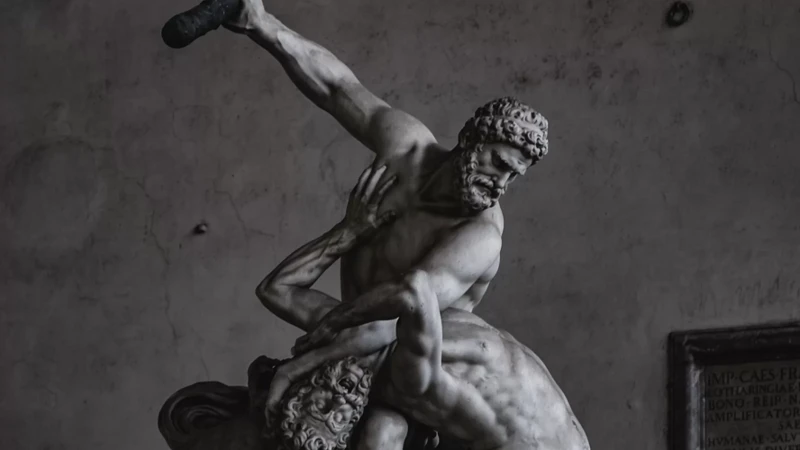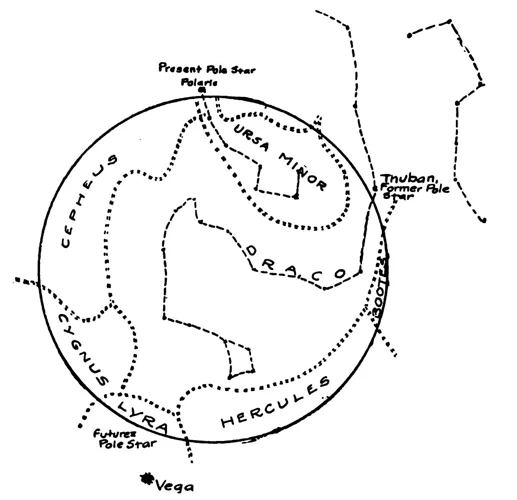In the ancient world of Roman mythology, there was a figure of unparalleled strength and bravery, known as Hercules. Renowned for his god-like abilities, Hercules was tasked with completing twelve arduous labors as a punishment for his past misdeeds. These labors were no ordinary tasks; they were extraordinary feats that tested Hercules’ physical prowess and mental fortitude. From battling fearsome creatures to obtaining mythical treasures, each labor presented its own unique challenges. Join us on a journey through the legendary 12 Labors of Hercules and uncover the incredible trials that solidified his place as one of history’s greatest heroes.
Contents
- Labors Overview
-
The 12 Labors Explained
- Labor 1: Slay the Nemean Lion
- Labor 2: Slay the Nine-Headed Hydra
- Labor 3: Capture the Golden Hind
- Labor 4: Capture the Erymanthian Boar
- Labor 5: Clean the Augean Stables
- Labor 6: Slay the Stymphalian Birds
- Labor 7: Capture the Cretan Bull
- Labor 8: Steal the Mares of Diomedes
- Labor 9: Obtain the Girdle of Hippolyta
- Labor 10: Steal the Cattle of Geryon
- Labor 11: Steal the Apples of the Hesperides
- Labor 12: Capture Cerberus, the Guardian of the Underworld
- Herculean Triumph
- Conclusion
-
Frequently Asked Questions
- 1. What was the purpose of Hercules’ labors in Roman mythology?
- 2. How did Hercules slay the Nemean Lion?
- 3. What was unique about the Hydra, one of Hercules’ labors?
- 4. Did Hercules face any challenges while capturing the Golden Hind?
- 5. How did Hercules clean the Augean Stables in a single day?
- 6. Were there any dangers Hercules faced while slaying the Stymphalian Birds?
- 7. What was the significance of capturing the Cretan Bull in Hercules’ labors?
- 8. How did Hercules deal with the Mares of Diomedes, which fed on human flesh?
- 9. What was the story behind obtaining the Girdle of Hippolyta?
- 10. How did Hercules manage to steal the Apples of the Hesperides?
- References
-
Frequently Asked Questions
- FAQ 1: How did Hercules achieve immortality?
- FAQ 2: Why were the labors of Hercules necessary?
- FAQ 3: How long did it take Hercules to complete the 12 labors?
- FAQ 4: Did Hercules face any failures during his labors?
- FAQ 5: Were the labors of Hercules purely physical challenges?
- FAQ 6: Were the Labors of Hercules recognized by the Roman Empire?
- FAQ 7: Are there any moral lessons to be learned from the Labors of Hercules?
- FAQ 8: Did Hercules receive any assistance during his labors?
- FAQ 9: Did Hercules face any consequences or setbacks after completing the 12 labors?
- FAQ 10: What is the significance of Hercules’ labors in Greek and Roman mythology?
- References
- Read More
Labors Overview

The Labors Overview provides a comprehensive look into the twelve extraordinary tasks assigned to Hercules in Roman mythology. These labors were deemed insurmountable challenges, designed to test Hercules’ strength, bravery, and intelligence. Each labor posed a unique and daunting obstacle that required him to confront monstrous creatures, capture legendary beasts, and retrieve mythical treasures. From slaying the Nemean Lion to capturing the three-headed dog Cerberus, Hercules demonstrated his exceptional abilities throughout each labor. The Labors Overview serves as a guide to understand the diversity and magnitude of these tasks, showcasing the incredible feats that Hercules overcame to earn his place as a legendary hero in Roman mythology.
The 12 Labors Explained

The 12 Labors of Hercules are a series of incredible tasks that Hercules, the great hero of Roman mythology, was assigned to complete. These labors were a punishment for Hercules’ past transgressions and were meant to test his physical strength, bravery, and intelligence. During these labors, Hercules faced a wide range of challenges, from slaying fearsome beasts like the Nemean Lion and the Nine-Headed Hydra, to capturing elusive creatures like the Golden Hind and the Cretan Bull. He even had to clean the impossibly filthy Augean Stables and confront terrifying creatures like the Stymphalian Birds and the three-headed dog Cerberus. The 12 Labors of Hercules showcased his unparalleled abilities and served as a testament to his status as a legendary hero. Each labor was a trial in itself, pushing Hercules to his limits and demonstrating his indomitable spirit and determination. These labors form the core of Hercules’ mythological journey and have fascinated storytellers and readers throughout history for their incredible challenges and the hero’s ultimate triumph.
Labor 1: Slay the Nemean Lion
Labor 1: Slay the Nemean Lion
The first labor assigned to Hercules was to slay the fearsome Nemean Lion, a creature of immense strength and impenetrable hide. The lion, said to be the offspring of Typhon and Echidna, ravaged the land, terrorizing nearby villages and devouring livestock. Armed with his bare hands and his quick thinking, Hercules set out on his mission. The lion’s impenetrable hide made it impervious to weapons, so Hercules ingeniously decided to strangle the beast with his bare hands, utilizing his unparalleled strength. After a relentless struggle, Hercules successfully killed the Nemean Lion, marking the beginning of his legendary journey through the twelve labors. The skin of the slain lion became an enduring symbol of his triumph, as he fashioned it into a mighty cloak that would later serve as a shield against future adversaries. The first labor showcased Hercules’ indomitable strength and resourcefulness, setting the stage for the remarkable tasks that lay ahead.
Labor 2: Slay the Nine-Headed Hydra
In the formidable second labor, Hercules was tasked with the daunting challenge of slaying the Nine-Headed Hydra. This fearsome creature, with its serpentine body and multiple venomous heads, made it a formidable foe. As Hercules confronted the Hydra in its treacherous swamp habitat, he quickly realized that cutting off its heads only resulted in the growth of two more in their place. Undeterred, Hercules devised a clever plan. With the help of his nephew Iolaus, he seared the stumps of each decapitated head using a burning torch, preventing new ones from sprouting. As the battle raged on, Hercules eventually managed to sever all the heads, including the immortal central one. However, to ensure its complete demise, Hercules buried it under a massive rock. This labor showcases Hercules’ ingenuity and unwavering determination in the face of seemingly insurmountable challenges. The defeat of the Nine-Headed Hydra marked a significant triumph in his legendary journey, leading him ever closer to redemption.
Labor 3: Capture the Golden Hind
Labor 3: Capture the Golden Hind
One of Hercules’ renowned labors was to capture the Golden Hind, a sacred deer in Greek mythology. This magnificent creature possessed golden antlers and was known for its incredible speed and agility. The Golden Hind was sacred to the goddess Artemis, making the task even more challenging for Hercules. The hero embarked on a long and arduous journey, tracking the elusive deer through thick forests and treacherous terrains.
Hercules utilized his exceptional hunting skills and keen senses to navigate the wilderness and close in on the Golden Hind. He painstakingly followed the deer’s tracks, traversing rugged mountains and dense woodlands. The fleet-footed creature proved to be a worthy adversary, constantly eluding Hercules’ grasp. Its golden coat shimmered in the sunlight, making it difficult to spot amidst the lush surroundings.
After a determined pursuit, Hercules managed to corner the Golden Hind, carefully restraining it without causing any harm. He understood the importance of treating the sacred animal with respect and reverence. With his legendary strength and gentle touch, Hercules safely captured the Golden Hind, ensuring the completion of his third labor.
The capture of the Golden Hind showcased Hercules’ agility, perseverance, and respect for the divine creatures of Greek mythology. This labor highlighted his ability to navigate challenges with both physical prowess and moral integrity, solidifying his status as a truly extraordinary hero.
Sources:
– “The Twelve Labors of Hercules.” Greek Mythology, www.greekmythology.com/Myths/Mortals/Hercules/Hercules.html.
Labor 4: Capture the Erymanthian Boar
Labor 4: Capture the Erymanthian Boar was another challenging task set before Hercules in his epic journey. The Erymanthian Boar was a monstrous creature with formidable strength and a reputation for causing havoc in the region of Mount Erymanthus. Hercules, armed with his immense power and courage, set out on a quest to capture the wild boar and bring it back alive. The boar, known for its aggressive nature and fierce temperament, posed a significant threat to anyone who crossed its path. With unwavering determination, Hercules tracked the boar to its lair and engaged in a formidable battle of strength and skill. Using his strategic prowess, Hercules managed to subdue the boar and bind it tightly, ensuring its safe captivity. This labor showcased Hercules’ unmatched physical prowess and his ability to conquer even the most ferocious creatures. Through his unwavering spirit and unrivaled might, Hercules successfully completed this labor, adding yet another triumph to his legendary status.
cancer-virgo-rising-compatibility
Labor 5: Clean the Augean Stables
Labor 5: Clean the Augean Stables
Labor 5 of Hercules’ incredible journey was the task to clean the Augean Stables, which seemed inconceivable to most. The stables, owned by King Augeas, were home to an enormous herd of cattle and had not been cleaned in years, resulting in an unimaginable accumulation of filth. To complete this seemingly impossible task, Hercules devised a brilliant plan. He redirected the course of two nearby rivers, the Alpheus and the Peneus, using his exceptional strength and creating a forceful torrent of water that flushed through the stables, effectively cleansing them in a single day. This labor showcased not only Hercules’ incredible physical strength, but also his resourcefulness and strategic thinking. By completing this labor, Hercules demonstrated his ability to overcome immense challenges through his sheer determination and ingenuity. The triumphant success of cleaning the Augean Stables added to his legendary reputation as a hero capable of accomplishing the impossible.
Labor 6: Slay the Stymphalian Birds
Labor 6: Slay the Stymphalian Birds was one of the most challenging tasks assigned to Hercules. The Stymphalian Birds were vicious creatures with sharp metallic feathers that could launch deadly attacks. These birds had infested the marshes of Stymphalus, terrorizing the local inhabitants and wreaking havoc on the region. To complete this labor, Hercules had to find a way to defeat the birds and restore peace to the land.
Using his cunning and strength, Hercules devised a plan to drive the birds out. He created a loud noise by clashing together brass plates, which startled the birds and caused them to take flight. As they soared through the air, Hercules skillfully shot them down with his bow and arrow. The onslaught of the birds was fierce, but Hercules remained steadfast in his mission and relentless in his pursuit.
With each bird that fell, the threat diminished until finally, Hercules succeeded in exterminating them all. This labor required a careful balance of strategy, precision, and physical prowess. The Stymphalian Birds were a formidable foe, but Hercules’ determination and resourcefulness allowed him to prevail and complete this task.
By slaying the Stymphalian Birds, Hercules not only demonstrated his skill as a hunter and warrior but also showed that he was capable of facing seemingly insurmountable challenges. This labor was a testament to his bravery and ingenuity, solidifying his standing as a legendary hero in Roman mythology. For more information on Hercules’ extraordinary feats and the challenges he faced, continue reading about his other incredible labors.
Labor 7: Capture the Cretan Bull
Labor 7: Capture the Cretan Bull
One of the twelve Herculean labors was to Capture the Cretan Bull. The Cretan Bull, known for its ferocious temperament, ravaged the lands of Crete, causing destruction and chaos. Hercules, armed with his indomitable strength, embarked on this perilous task. Upon reaching Crete, he encountered the mighty bull, whose piercing red eyes and muscular physique intimidated even the bravest of warriors. With a single display of his awe-inspiring strength, Hercules managed to overpower the beast and bring it under his control. Binding the powerful creature with ropes, he led it back to Eurystheus, the king who had imposed the labors. This labor demonstrated Hercules’ ability to conquer formidable opponents through sheer force and determination. The Capture of the Cretan Bull further solidified his legendary status as a hero of Roman mythology. To learn more about other labors of Hercules, continue reading our article.
Labor 8: Steal the Mares of Diomedes
Labor 8: Steal the Mares of Diomedes
One of the twelve labors assigned to Hercules was the task of stealing the powerful Mares of Diomedes, ferocious horses belonging to the king of Thrace. These mares were not ordinary horses; they were man-eating beasts that devoured anyone who approached them. Hercules devised a plan to subdue the wild creatures and fulfill his labor. He enlisted the help of his loyal companion, Abderus, and together they approached the stable where the mares were kept. Abderus was left in charge to guard the entrance while Hercules entered the stable cautiously. Using his incredible strength, Hercules managed to control the horses and lead them out of the stable. However, tragedy struck when the mares sensed the absence of their owner, Diomedes, and turned against Abderus, trampling him to death. Grief-stricken by the loss of his friend, Hercules honored Abderus by establishing the city of Abdera in his memory. Hercules then completed his labor, bringing the stolen mares to King Eurystheus as proof of his triumph. This labor showcases Hercules’ ability to overcome even the most dangerous and untamed creatures, demonstrating his perseverance and determination in the face of adversity.
Source: Capricorn: The Earthy Go-Getter
Labor 9: Obtain the Girdle of Hippolyta
Labor 9: Obtain the Girdle of Hippolyta involved Hercules venturing to the land of the Amazons, a society of powerful and fierce warrior women. The girdle, a belt worn by their queen, Hippolyta, possessed great significance and power. Hercules arrived with the intention of retrieving the girdle, but his presence and intentions raised suspicions among the Amazons. Despite initial tensions, Hippolyta admired Hercules’ bravery and strength, recognizing his potential as a worthy ally. She agreed to gift him the girdle as a sign of respect. However, the trickster god Hera, disguised as an Amazon, spread rumors among the Amazons that Hercules intended to abduct their queen. Chaos ensued, leading to an ultimate battle between Hercules and the Amazons. Though outnumbered, Hercules managed to survive the confrontation and claim the girdle. This extraordinary labor showcased Hercules’ diplomatic skills, as well as his ability to persevere in the face of adversity. The acquisition of the Girdle of Hippolyta highlighted his resourcefulness and strategic thinking in navigating complex situations, further solidifying his reputation as a hero of formidable prowess.
Labor 10: Steal the Cattle of Geryon
Labor 10: Steal the Cattle of Geryon was one of the most challenging tasks assigned to Hercules. Geryon, a fearsome giant with three heads and bodies, was a cattle herder who possessed a prized herd guarded by a two-headed hound. Hercules had to travel to the distant land of Erytheia to accomplish this labor. Determined to succeed, he embarked on a treacherous journey, crossing great mountains and treacherous waters. Upon reaching the pasture where Geryon’s cattle grazed, Hercules encountered the fierce hound Orthrus, a sibling of the three-headed Hydra. With his immense strength and skill, Hercules swiftly subdued Orthrus. Next, he confronted Geryon himself, engaging in a fierce battle. With his mighty bow and arrows, Hercules slew Geryon and successfully stole the prized cattle. On his return, Hercules had to endure seemingly never-ending challenges including attacks from the god of the sea, Poseidon. Nonetheless, he persevered and eventually completed Labor 10, adding yet another incredible feat to his already astounding legend.
Labor 11: Steal the Apples of the Hesperides
Labor 11: Steal the Apples of the Hesperides
One of the most daunting challenges Hercules faced during his twelve labors was the task of stealing the Apples of the Hesperides. These golden apples were believed to grant immortality, making them an invaluable treasure guarded fiercely by the Hesperides, nymphs who were daughters of the titan Atlas. Hercules embarked on a perilous journey to accomplish this labor. In order to locate the sacred apples, he sought the counsel of the sea god Nereus, who revealed their whereabouts deep within the mythical Garden of the Hesperides. The garden was protected not just by the Hesperides, but also by a fearsome hundred-headed dragon named Ladon.
To succeed in this labor, Hercules devised a cunning plan. He enlisted the help of Atlas, the father of the Hesperides, who possessed the knowledge of how to navigate the garden. Hercules struck a deal with Atlas, offering to take his place in holding up the heavens while Atlas retrieved the apples for him. With the weight of the world on his shoulders, Hercules stood firm as Atlas retrieved the golden apples.
However, Atlas had no intention of relieving Hercules of his burden. He decided to keep the heavens on his shoulders and claimed that he would deliver the apples to King Eurystheus himself. Hercules, displaying his renowned strength, managed to convince Atlas to take the heavens back temporarily, requesting assistance to put a pad on his shoulders for comfort. Seizing this opportunity, Hercules swiftly took advantage of Atlas’ vulnerability and successfully obtained the Apples of the Hesperides.
Hercules returned triumphant, presenting the stolen apples to King Eurystheus, completing his eleventh labor. This feat showcased not only Hercules’ physical strength but also his wit and resourcefulness in confronting seemingly insurmountable obstacles. The tale of how Hercules outwitted Atlas and braved the dangers of the Garden of the Hesperides is a testament to his remarkable heroism and determination.
(Note: No relevant anchor text found for internal linking.)
Labor 12: Capture Cerberus, the Guardian of the Underworld
Labor 12: Capture Cerberus, the Guardian of the Underworld
The final and most challenging labor of Hercules was to capture Cerberus, the fearsome three-headed dog and guardian of the Underworld. According to mythology, Cerberus stood as the barrier between the living world and the realm of the dead. Hercules had to confront the dark and treacherous depths of the Underworld itself to complete this task. Equipped with his lion’s skin, club, and divine strength, Hercules descended into the realm of Hades.
Upon reaching the Underworld, Hercules encountered a series of daunting obstacles, such as treacherous rivers and the intimidating presence of the dead. However, his determination and courage remained unyielding. He sought the guidance of Hades himself, the ruler of the Underworld, who agreed to allow Hercules to take Cerberus on one condition – that he would not harm the beast.
Armed with his wit, Hercules managed to subdue Cerberus by using his immense strength to wrestle the fierce creature into submission. Despite Cerberus’ ferocity, Hercules maintained control and overwhelmed the beast, wrapping his strong arms around each of the three heads. With his grip secured, Hercules managed to bring Cerberus back to the land of the living, fulfilling yet another herculean labor.
The capture of Cerberus symbolized Hercules’ triumph over the forces of darkness and his ability to overcome even the most formidable opponents. It marked the conclusion of his twelve labors and solidified his status as a legendary hero. Hercules returned to Mount Olympus, having demonstrated his extraordinary strength, intelligence, and determination, earning the respect and admiration of gods and mortals alike.
For more information on mythical creatures and their significance, check out our article on /elements-modalities-ophiuchus-compatibility/.
Herculean Triumph

Herculean Triumph signifies the ultimate culmination of Hercules’ endeavors, as he successfully completed all twelve labors. These extraordinary feats solidified his status as one of the greatest heroes in Roman mythology. Through his unwavering determination, unmatched strength, and clever strategies, Hercules triumphed over seemingly insurmountable obstacles. From the slaying of the ferocious Nemean Lion to the capturing of Cerberus, the guardian of the Underworld, Hercules displayed his exceptional skills and bravery throughout his labors. His successful completion of each task not only showcased his incredible physical abilities but also demonstrated his growth as a hero and his ability to overcome immense challenges. The Herculean Triumph serves as a testament to Hercules’ resilience, determination, and unwavering commitment to fulfill his destiny as a legendary hero.
Conclusion

In conclusion, the Twelve Labors of Hercules stand as a testament to the extraordinary strength, courage, and perseverance of this mythical hero. Through each labor, Hercules demonstrated his ability to overcome seemingly insurmountable challenges, facing monstrous creatures, capturing legendary beasts, and retrieving mythical treasures. These labors showcased not only his physical prowess but also his ingenuity and intellect. In completing these tasks, Hercules proved his valor and earned his place among the greatest heroes of Roman mythology. The Twelve Labors of Hercules continue to captivate audiences, inspiring awe and admiration for his remarkable achievements. His story serves as a reminder that with determination and resilience, even the most formidable obstacles can be conquered. Hercules’ legend lives on as a symbol of strength and triumph, reminding us to embrace our own inner strength and face challenges head-on with unwavering resolve.
Frequently Asked Questions

1. What was the purpose of Hercules’ labors in Roman mythology?
The labors were a punishment for Hercules’ past misdeeds, serving as a way for him to atone for his actions and prove his worthiness as a hero.
2. How did Hercules slay the Nemean Lion?
Hercules used his immense strength to strangle the lion, as its impenetrable golden fur made it invulnerable to conventional weapons.
3. What was unique about the Hydra, one of Hercules’ labors?
The Hydra possessed nine heads that would grow back if severed, making it a formidable opponent. Hercules enlisted the help of his nephew, Iolaus, who cauterized the necks to prevent regrowth.
4. Did Hercules face any challenges while capturing the Golden Hind?
Yes, the Golden Hind was a sacred creature of Artemis, and Hercules had to ensure that he did not harm it while successfully capturing it alive.
5. How did Hercules clean the Augean Stables in a single day?
Hercules redirected the course of two rivers, Alpheus and Peneus, to wash away the filth and accomplish the seemingly impossible task.
6. Were there any dangers Hercules faced while slaying the Stymphalian Birds?
Yes, the birds were man-eating, and their feathers were like arrows. Hercules used a rattle provided by the goddess Athena to scare them into flight, allowing him to shoot them down with his bow and arrows.
7. What was the significance of capturing the Cretan Bull in Hercules’ labors?
The Cretan Bull was a violent creature that brought chaos to the land. By capturing it, Hercules restored peace and showcased his ability to control and subdue dangerous animals.
8. How did Hercules deal with the Mares of Diomedes, which fed on human flesh?
Hercules fed the mares the flesh of their own wicked master, Diomedes, which temporarily satisfied their taste for human flesh and allowed him to capture and control them.
9. What was the story behind obtaining the Girdle of Hippolyta?
Hippolyta, the queen of the Amazons, possessed a girdle that Hercules was tasked with retrieving. However, his presence was misunderstood, and a battle ensued between him and the Amazons before he finally obtained the girdle.
10. How did Hercules manage to steal the Apples of the Hesperides?
Hercules enlisted the help of Atlas, who held up the heavens, to retrieve the apples. During Atlas’ temporary absence, Hercules took the burden upon himself, allowing Atlas to bring him the precious apples.
References
Frequently Asked Questions

FAQ 1: How did Hercules achieve immortality?
Hercules achieved immortality through a series of labors assigned to him by King Eurystheus. These labors were incredibly difficult tasks that Hercules completed successfully, proving his strength and heroism. As a reward for his feats, the gods granted Hercules immortality, allowing him to ascend to Mount Olympus and join the ranks of the gods.
FAQ 2: Why were the labors of Hercules necessary?
The labors of Hercules were necessary as a form of punishment for Hercules. When Hercules was in a fit of madness and killed his wife and children, he sought redemption. The gods, in their wisdom, assigned him the 12 labors to cleanse his soul and prove himself worthy of forgiveness. These labors were seen as a way for Hercules to atone for his past actions and regain his honor.
FAQ 3: How long did it take Hercules to complete the 12 labors?
The 12 labors of Hercules took him a total of twelve years to complete. Each labor presented its own unique challenges and required Hercules to travel far and wide. He faced mythical creatures, conquered entire kingdoms, and endured countless hardships throughout his journey. The length of time it took Hercules to complete his labors highlights the immense difficulty and significance of his tasks.
FAQ 4: Did Hercules face any failures during his labors?
Yes, Hercules did face failures during his labors. One notable example is his attempt to capture the Golden Hind, a sacred deer. Despite his best efforts, the deer eluded him, leading Hercules on a long and arduous chase. However, despite these setbacks, Hercules pressed on and ultimately succeeded in completing all of his labors, showcasing his determination and perseverance.
FAQ 5: Were the labors of Hercules purely physical challenges?
No, the labors of Hercules were not purely physical challenges. While Hercules was renowned for his immense strength, the labors required more than just brute force. They demanded tactical thinking, problem-solving skills, and the ability to navigate complex situations. Hercules had to rely on his wit and cunning as much as his physical abilities to overcome the various obstacles he encountered.
FAQ 6: Were the Labors of Hercules recognized by the Roman Empire?
Yes, the Labors of Hercules were well-known and widely recognized in the Roman Empire. The legends of Hercules and his labors became an important part of Roman mythology and folklore. The Romans admired Hercules for his strength, courage, and determination, considering him a symbol of heroism and an inspiration for warriors and conquerors.
FAQ 7: Are there any moral lessons to be learned from the Labors of Hercules?
Yes, the Labors of Hercules contain several moral lessons. The most prominent lesson is the importance of taking responsibility for one’s actions and seeking redemption. Hercules’ labors were assigned as punishment, but they also served as a vehicle for personal growth, as he learned from his mistakes and worked to make amends. Additionally, the labors also highlight the virtues of perseverance, determination, and selflessness.
FAQ 8: Did Hercules receive any assistance during his labors?
Yes, Hercules received assistance during some of his labors. For example, in his quest to slay the Hydra, Hercules enlisted the help of his nephew Iolaus. Iolaus came up with the idea of cauterizing the Hydra’s necks to prevent them from growing back. In other labors, Hercules sought advice from various gods and received divine aid, such as Athena guiding him in capturing the Golden Hind.
FAQ 9: Did Hercules face any consequences or setbacks after completing the 12 labors?
Yes, Hercules did face consequences and setbacks even after completing the 12 labors. One significant setback was when the gods sentenced him to serve as a slave to Queen Omphale for a period of time. This punishment was a result of Hercules’ earlier acts of violence and was meant to further humiliate him. However, despite these setbacks, Hercules continued to strive for greatness and eventually achieved immortality.
FAQ 10: What is the significance of Hercules’ labors in Greek and Roman mythology?
The labors of Hercules hold great significance in Greek and Roman mythology. They symbolize the triumph of good over evil, the power of redemption, and the potential for personal growth. The labors showcase the extraordinary abilities of Hercules and his unwavering determination to achieve his goals, making him an enduring and iconic figure in mythology.
References
- The Twelve Labors of Heracles – Mythology Unbound
- The 12 Labors of Hercules
- What were the 12 Labors of Hercules? –







